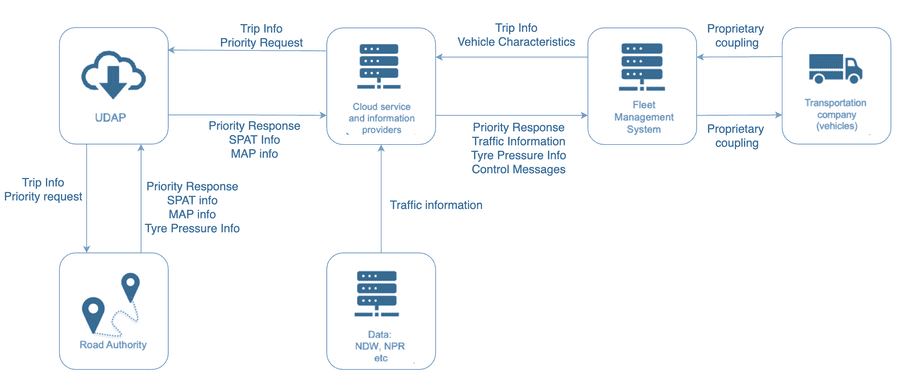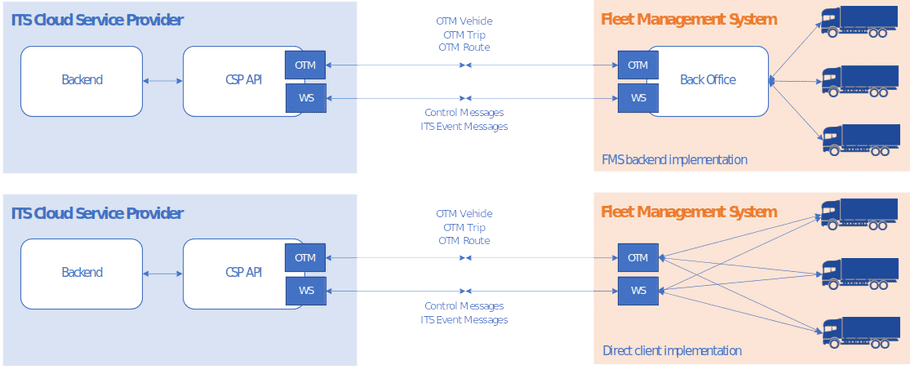FMS ITS Implementation
Overview
This is an implementation of the FMS profile
With ITS services, truck drivers can get in-truck real-time information about dangerous situations, speed limits, lane closures, events, closed bridges, emergency vehicles approaching, tyre pressure measurements, information of smart traffic lights and many other types of real-time traffic information. ITS services are the collective name for the available smart applications that can be used in-truck.
The use of these kinds of data leads to benefits for logistics companies, governments and society with regard to traffic flow, traffic flow, livability, sustainability and the environment.
A standardized interface between logistics parties and ITS cloud service providers has been realized. This so-called ITS-FMS interface makes it possible to make ITS services part of the solutions of a logistics IT-supplier (typically Fleet Management System suppliers). The ITS-FMS interface has been established as an OTM profile, for which this page provides an introduction to start using ITS services.
General Structure

The communication between ITS cloud service provider and logistical IT supplier (typically Fleet Management System-supplier of the in-truck solution) runs through two different syntax solutions (Open Trip Model and Protocol buffers) and two different connections (REST API and WebSocket):
-
RESTful API for the following OTM messages:
- Vehicle
- Trip
- Route
-
WebSocket connection with Protobuf messages for the following messages:
- ITS Event message
- LocationUpdateMessage (OTM look-a-like)
When implementing this ITS-FMS, effectively you’ll be setting up endpoints for both types of connections.

For the FMS-systems, there are various implementation options:
- CSP Backend – Backoffice (FMS backend implementation)
- CSP Backend – Direct to vehicle (direct client implementation
It is up to the logistics IT supplier to decide whether the communication takes place directly from the client or via a backend. Both options have already been tested in practice and each offer their own set of advantages and disadvantages. Technical description of the ITS-FMS interface and Protobuf elaboration can be found at: https://dutchmobilityinnovations.com/spaces/1185/deflog/files?directoryID=9637